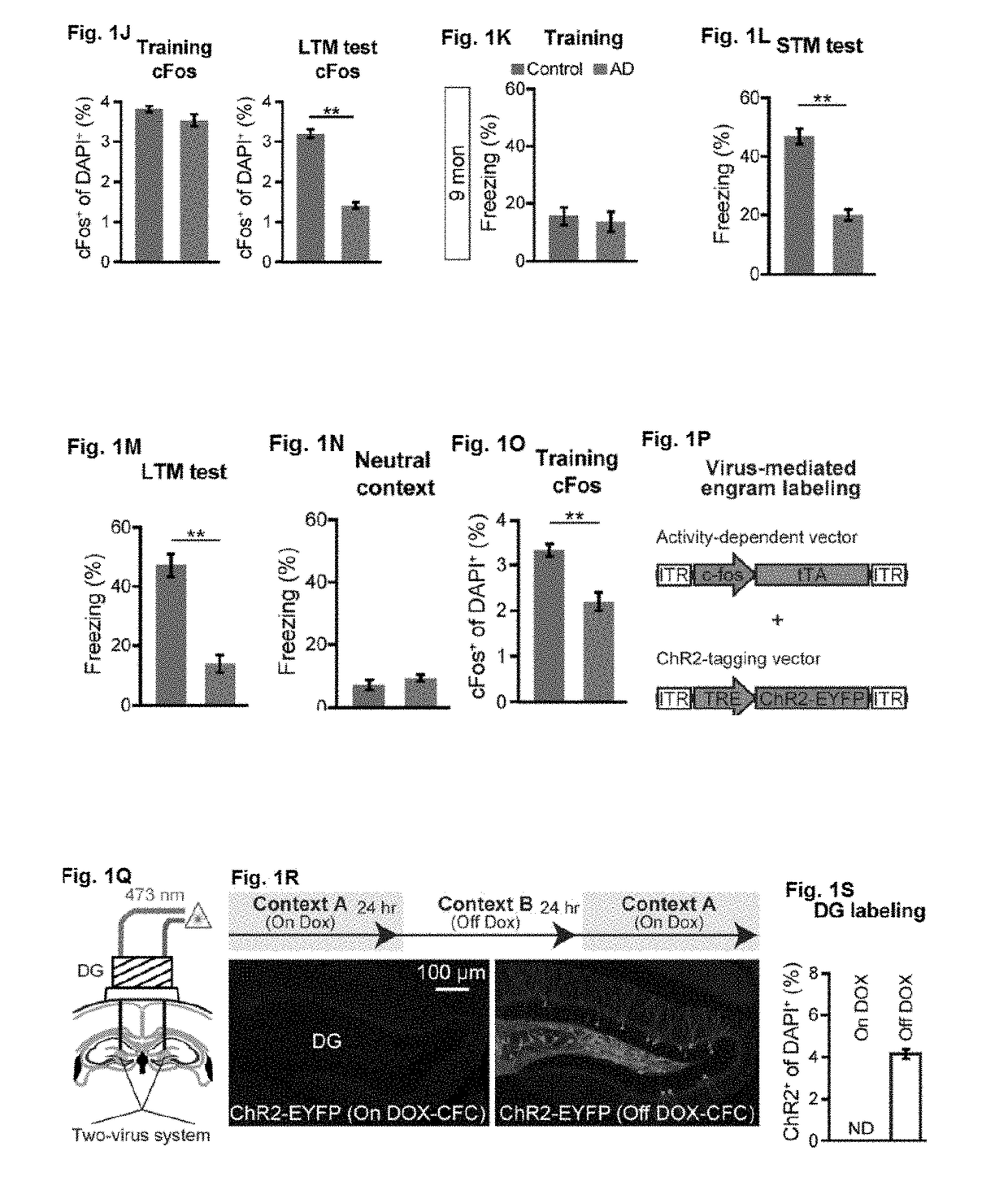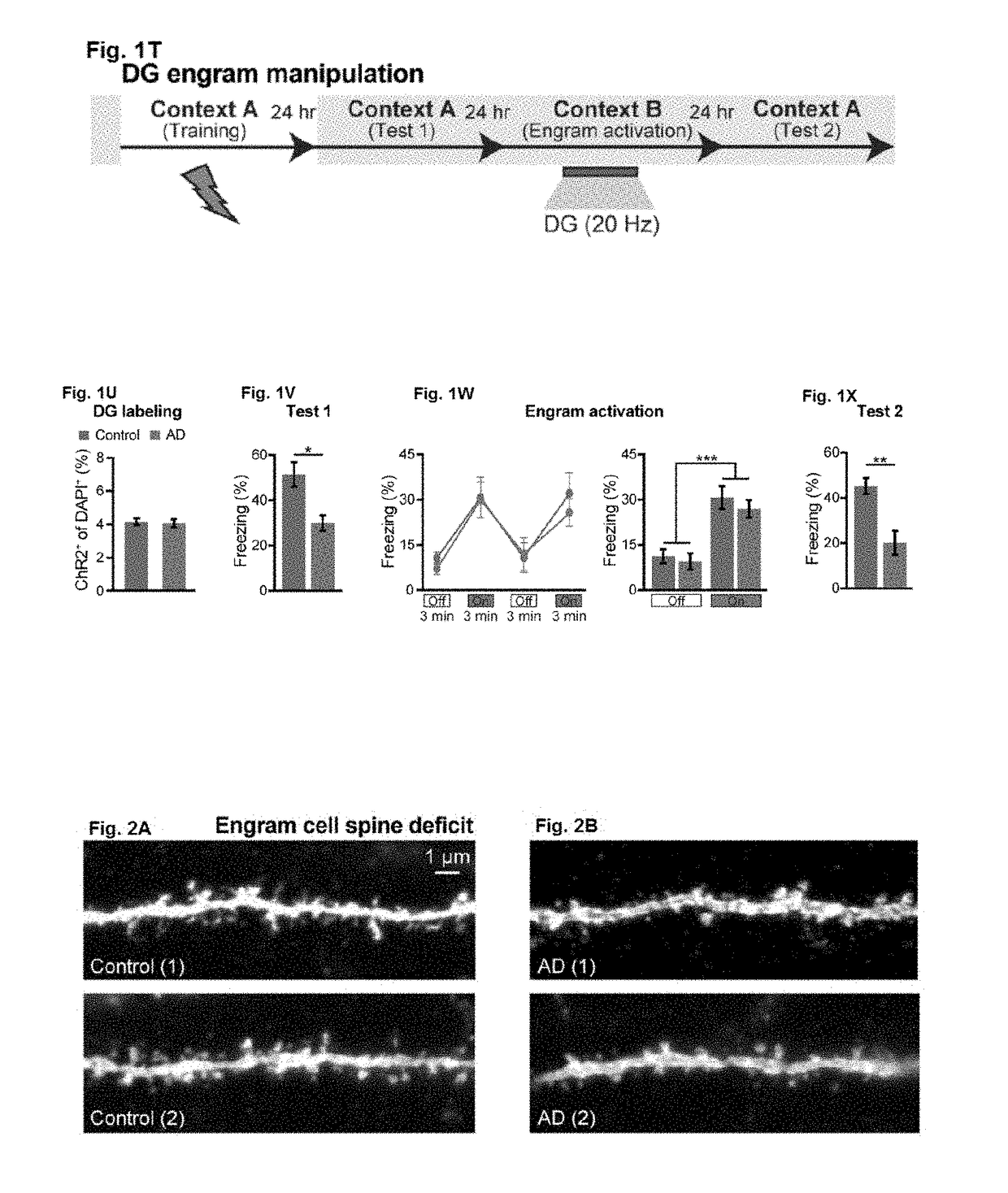Methods and compositions for treating alzheimer's disease and other memory-associated disorders and conditions
a technology for memory-associated disorders and compositions, applied in the field of methods and compositions for treating alzheimer's disease and other memory-associated disorders and conditions, can solve the problems of inability to discriminate rigorously between information storage impairments and disrupted retrieval of stored information, and achieve the effects of increasing dendritic spine density
- Summary
- Abstract
- Description
- Claims
- Application Information
AI Technical Summary
Benefits of technology
Problems solved by technology
Method used
Image
Examples
example 1
[0094]Studies were performed to assess memory retrieval resulting from activation of memory engram cells and use of such methods to treat Alzheimer's disease and memory-impairment-associated diseases and conditions. Addition information is provided in Roy, D. S. et al. (2016) Nature Vol. 531:508-512 and Extended Data section; the content of which is incorporated herein by reference in its entirety.
Subjects.
[0095]The APP / PS1 double-transgenic AD mice [Jankowski, J. L., et al. (2004) Hum. Mol. Genet. 13, 159-170], originally described as Line 85, were obtained from Jackson Laboratory, Bar Harbor, Me. (stock number 004462). Under the control of mouse prion promoter elements, these mice express a chimeric mouse / human APP transgene containing Swedish mutations (K595N / M596L) as well as a mutant human PS1 transgene (delta exon 9 variant). To label memory engram cells in APP / PS1 mice, a triple transgenic mouse line was generated by mating c-Fos.tTA [Liu, X., et al. (2012) Nature 484, 381-38...
PUM
| Property | Measurement | Unit |
|---|---|---|
| frequency | aaaaa | aaaaa |
| frequency | aaaaa | aaaaa |
| frequency | aaaaa | aaaaa |
Abstract
Description
Claims
Application Information
 Login to View More
Login to View More - R&D
- Intellectual Property
- Life Sciences
- Materials
- Tech Scout
- Unparalleled Data Quality
- Higher Quality Content
- 60% Fewer Hallucinations
Browse by: Latest US Patents, China's latest patents, Technical Efficacy Thesaurus, Application Domain, Technology Topic, Popular Technical Reports.
© 2025 PatSnap. All rights reserved.Legal|Privacy policy|Modern Slavery Act Transparency Statement|Sitemap|About US| Contact US: help@patsnap.com



